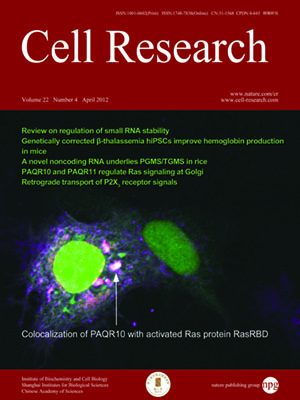
Volume 22, No 4, Apr 2012
ISSN: 1001-0602
EISSN: 1748-7838 2018
impact factor 17.848*
(Clarivate Analytics, 2019)
Volume 22 Issue 4, April 2012: 746-756
ORIGINAL ARTICLES
Revealing a steroid receptor ligand as a unique PPARγ agonist
Shengchen Lin1,2,*, Ying Han1,2,*, Yuzhe Shi1, Hui Rong2, Songyang Zheng2, Shikan Jin1, Shu-Yong Lin1, Sheng-Cai Lin1 and Yong Li1,2
1State Key Laboratory for Cellular Stress Biology, School of Life Sciences, Xiamen University, Fujian 361005, China
2Department of Pharmaceutical Sciences, Center for Pharmacogenetics, University of Pittsburgh, Pittsburgh, PA 15261, USA
Correspondence: Yong Li, Sheng-Cai Lin,(yongli@xmu.edu.cn; linsc@xmu.edu.cn)
>Peroxisome proliferator-activated receptor gamma (PPARγ) regulates metabolic homeostasis and is a molecular target for anti-diabetic drugs. We report here the identification of a steroid receptor ligand, RU-486, as an unexpected PPARγ agonist, thereby uncovering a novel signaling route for this steroid drug. Similar to rosiglitazone, RU-486 modulates the expression of key PPARγ target genes and promotes adipocyte differentiation, but with a lower adipogenic activity. Structural and functional studies of receptor-ligand interactions reveal the molecular basis for a unique binding mode for RU-486 in the PPARγ ligand-binding pocket with distinctive properties and epitopes, providing the molecular mechanisms for the discrimination of RU-486 from thiazolidinediones (TZDs) drugs. Our findings together indicate that steroid compounds may represent an alternative approach for designing non-TZD PPARγ ligands in the treatment of insulin resistance.
Cell Research (2012) 22:746-756. doi:10.1038/cr.2011.162; published online 11 October 2011
FULL TEXT | PDF
Browse 2125


